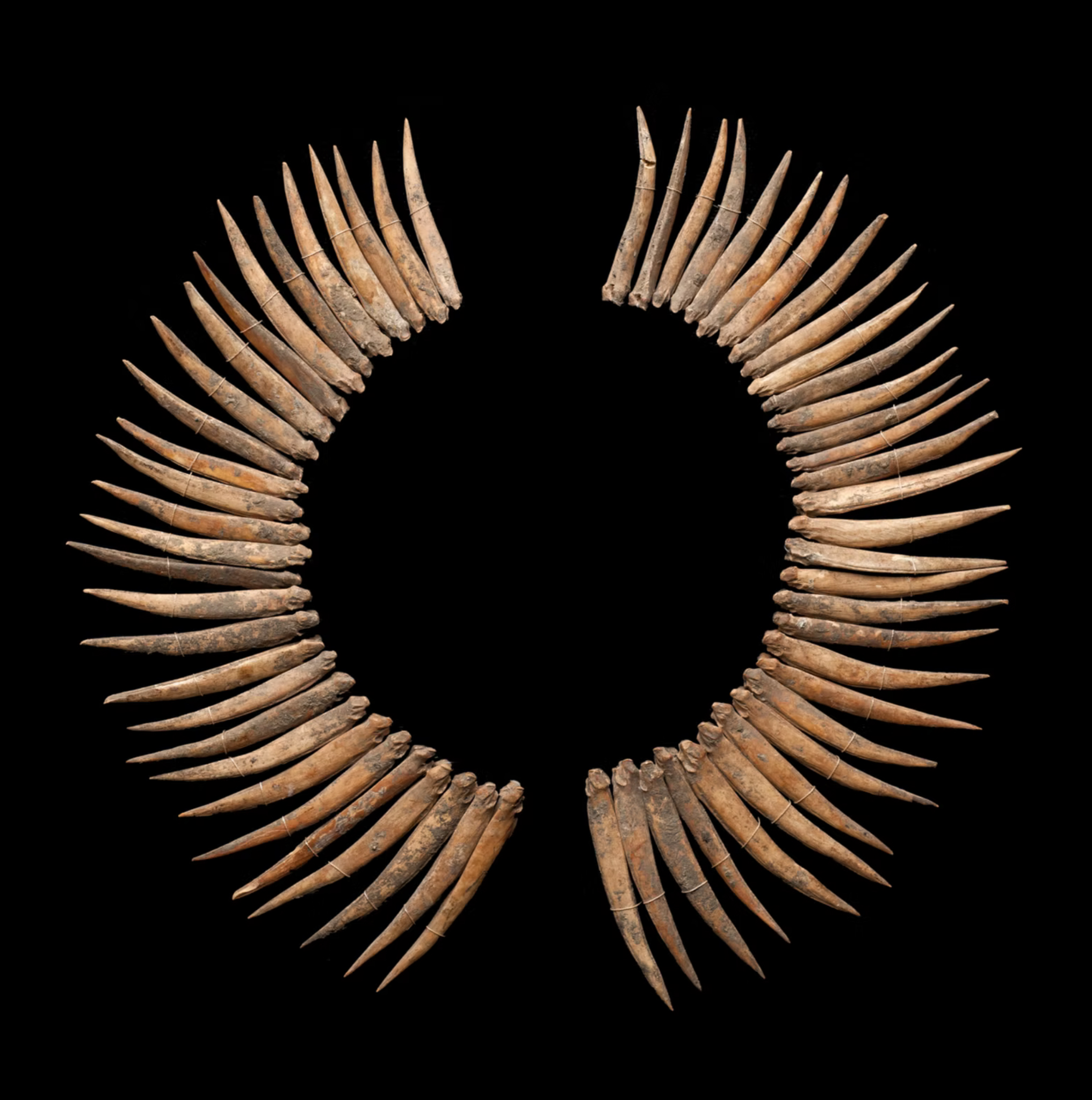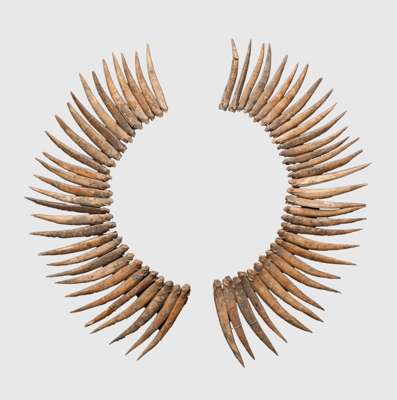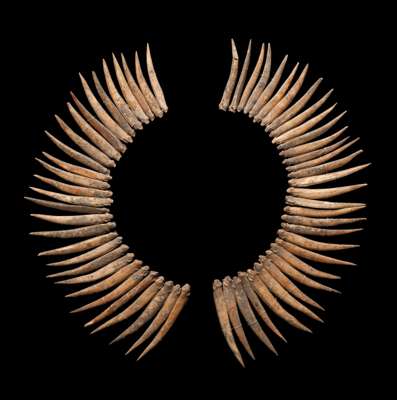
Lot 27

TAINO NECKLACE
DOMINICAN REPUBLIC, C. 800 - 1500 A.D.






African & Oceanic Art, Natural History and Ancient Art
Auction: 30 July 2025 from 14:00 BST
Description
fish bone, symmetrically arranged in a circular pattern with pointed terminals radiating outward evoking the original shape of the necklace, presented within a modern frame and backing
Dimensions
20cm diameter, frame 29 x 34cm
Provenance
Dominique Rabier Collection, Brussels, Belgium
Footnote
The word guaikano (also spelled guaicano) comes from the Taíno language and refers to the remora fish. Among the Taíno, fishermen used the guaikano for its remarkable ability to latch onto larger sea creatures such as turtles and sharks. By tying a cord, known as kabuia (or cabuya), to the tail of the guaikano, a fisherman could retrieve both the remora and the larger animal to which it had attached. The vertebrae of the guaikano were then carefully extracted and crafted into necklaces, often adorned with amulets shaped like humans or animals.





